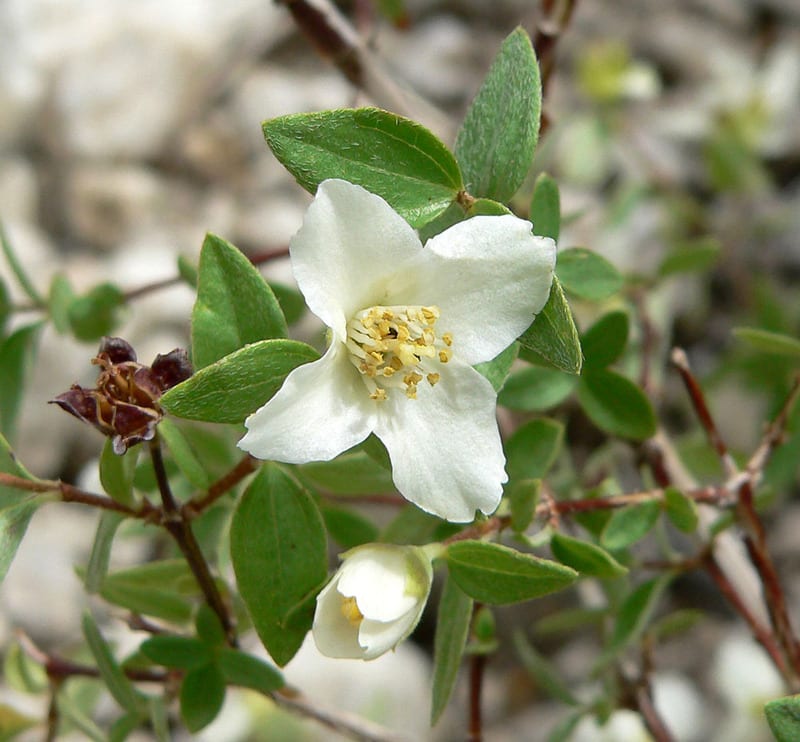Littleleaf Mock Orange, Smallleaf Mock Orange
Philadelphus microphyllus

🌿 Morphology
🌞 Growing conditions
🌍 Origin and family
🌾 Uses
Warning: Despite the care taken in writing this sheet, it is essential to cross-reference sources before using or consuming any plant. When in doubt, consult a qualified professional
Permaculture uses
While primarily ornamental, Philadelphus species have fragrant flowers that attract pollinators. Some cultivars are known for exceptionally strong fragrance. The flowers can be used to make teas and infusions with a delicate orange-blossom flavor, though this is not a primary edible crop. It provides excellent habitat for beneficial insects and birds. Consider 'Snow White' for its profuse blooms and compact size.
Permapeople description
A deciduous shrub native to the southwestern United States and Mexico. It is known for its small, fragrant white flowers that bloom in late spring to early summer. It prefers well-drained soil and full sun to partial shade.
Botanical description
Philadelphus microphyllus is a deciduous shrub in the Hydrangeaceae family. It typically grows to a height of 2-5 feet. The leaves are small, opposite, ovate to elliptic, and generally less than 1 inch long. The bark is gray to reddish-brown and may peel in older specimens. The flowers are white, single or in small clusters, with four petals and numerous stamens, possessing a strong, sweet fragrance. The fruit is a small capsule containing many seeds.
Companion planting
Philadelphus benefits from companions that provide dappled shade or ground cover to keep the roots cool and moist. Avoid planting near aggressive, competitive species that may overshadow or outcompete it for resources. Good companions include other shrubs with different bloom times to extend the pollinator season.
Propagation methods
Propagation can be achieved through seeds, cuttings (both softwood and hardwood), and layering. Seed propagation is possible but may require stratification. Cuttings taken in late spring or early summer from new growth tend to root readily. Hardwood cuttings taken in late fall or winter are also viable.
History and traditions
Historically, various Philadelphus species have been used in traditional medicine for their purported anti-inflammatory and sedative properties. Some Native American tribes used the stems for crafting pipes and other tools. The fragrant flowers are often associated with purity and innocence and used in floral arrangements.
Usage calendar
Flowering typically occurs in late spring to early summer (May-June). Pruning is best done immediately after flowering to encourage new growth for the following year's bloom. Planting is ideally done in the fall or early spring. Harvesting of flowers for fragrance or culinary use occurs during the flowering period.
